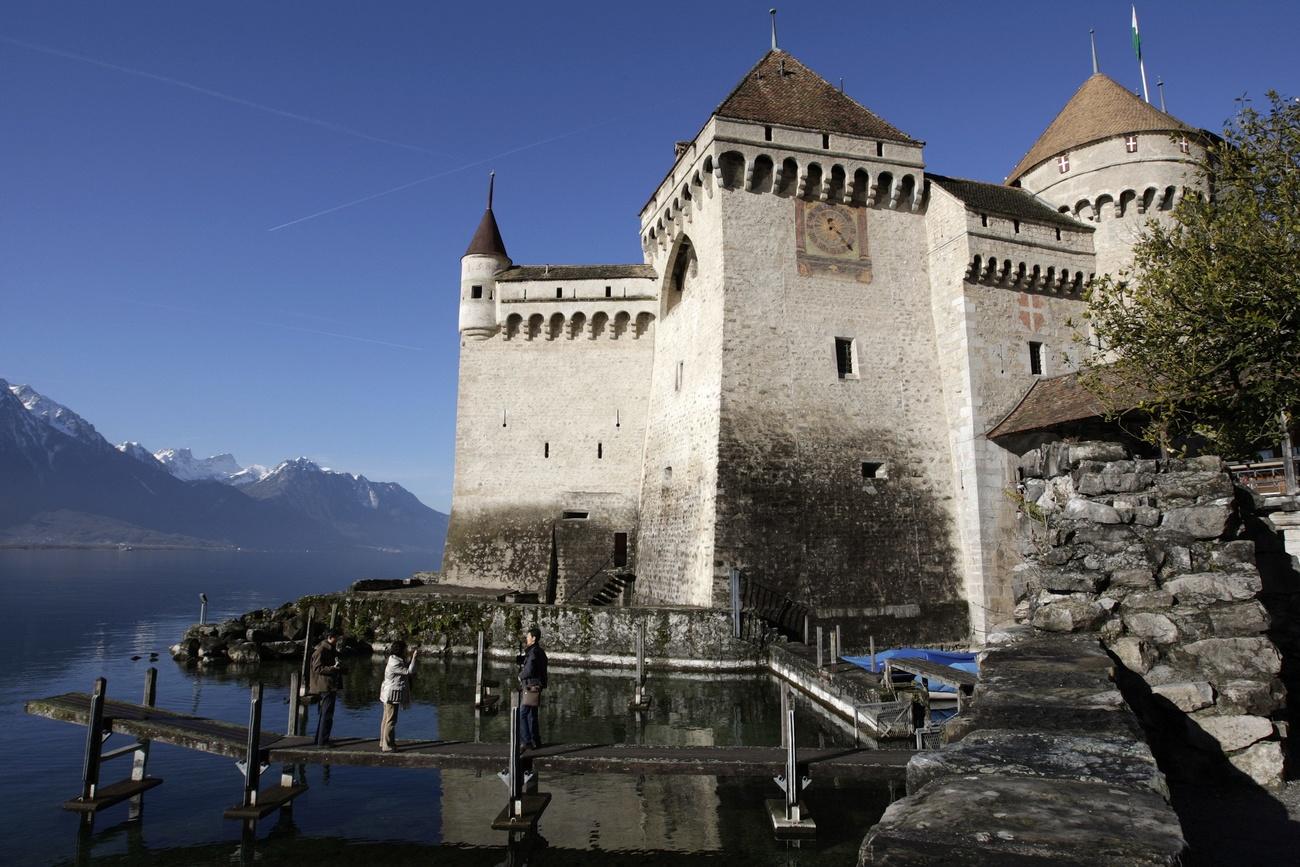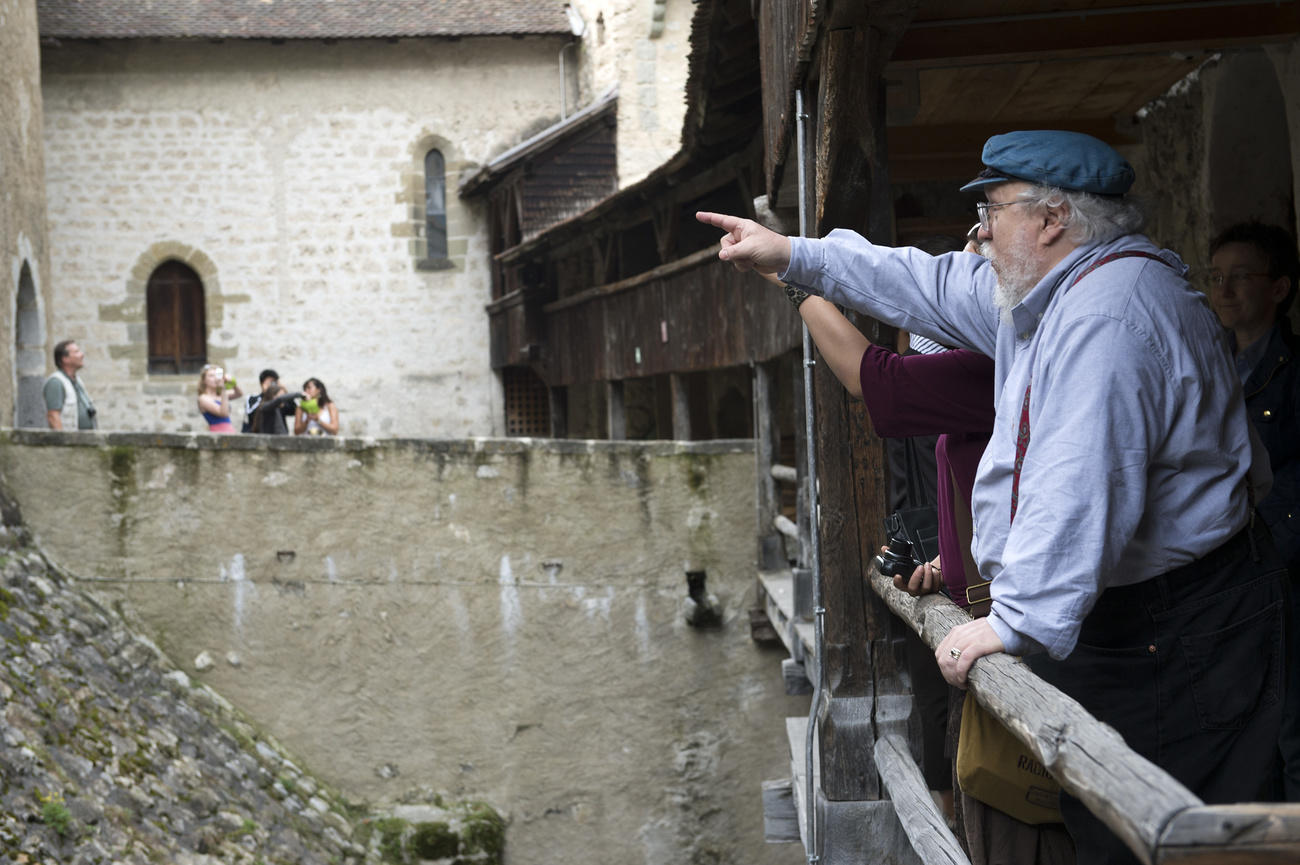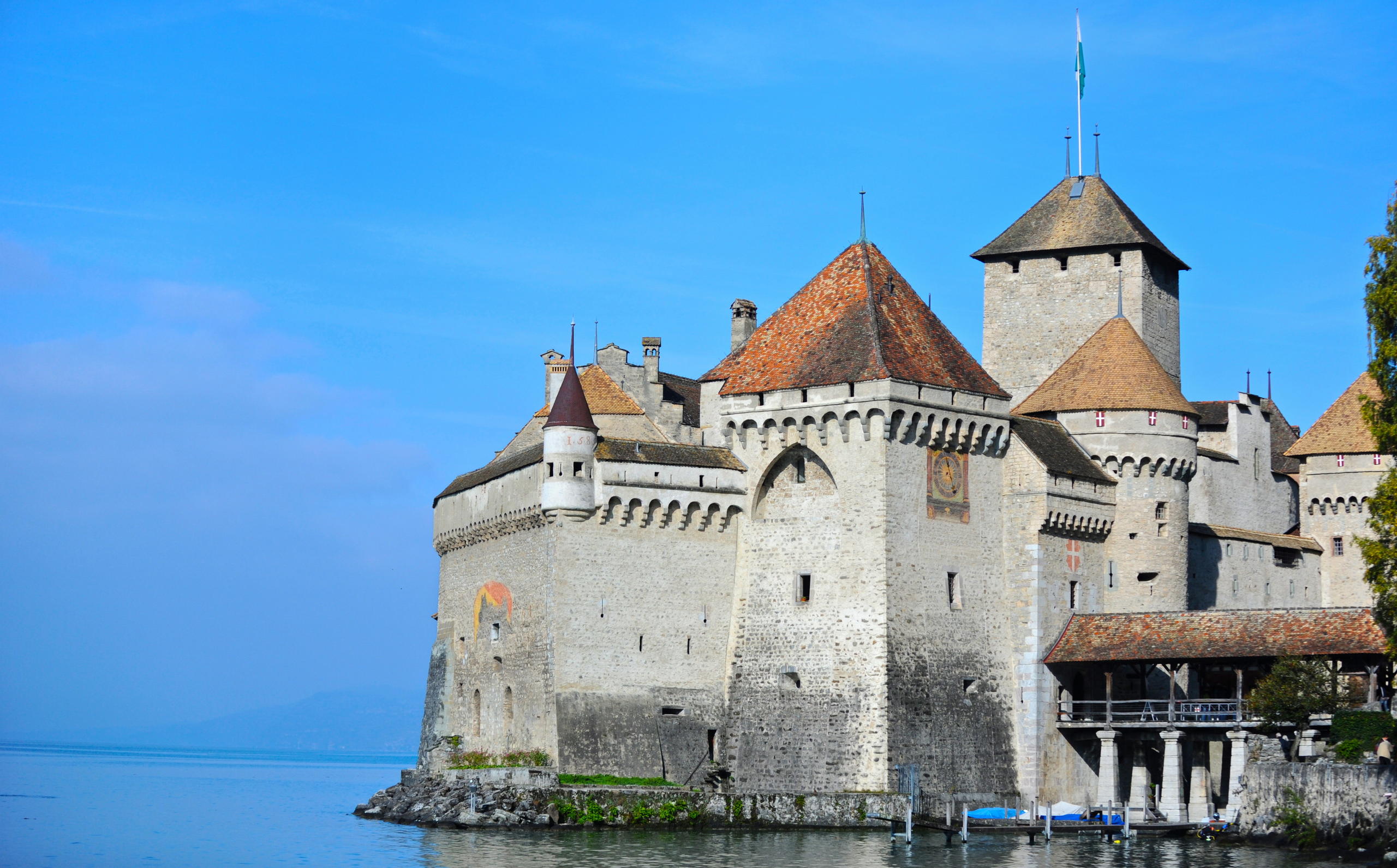
Château de Chillon sets visitor record

Château de Chillon, the most visited historical building in Switzerland, set a new record last year: 432,000 people visited the medieval castle near Montreux on Lake Geneva.
This represents an increase of 7% over 2018, the Chillon Castle FoundationExternal link said on Tuesday. The number of visitors has thus exceeded 400,000 for the third year in a row.
Visitors from Switzerland made up 22% of the total, followed by those from China (15%), the United States (12%), France (6.5%) and South Korea (4%).

Since 2019, written visitor information at the ticket office has been available in Arabic, Hebrew and Thai. This information is now available in a total of 17 languages. The audio guide is available in nine languages, including Korean since 2019.
In addition, the number of guided tours rose from 2,688 in 2018 to 3,257.
The Chillon Castle Foundation generates over 90% of its income through its own activities, with 65% coming from entrance fees. Only 5% of the income is subsidies for restoration and maintenance work on the building.
Château de Chillon
Located on a narrow road between Lake Geneva and a mountainside, Chillon is a strategic point in the route to Italy. Archaeological finds in the area date back to the Bronze Age.
The first mention of the castle dates back to 1150. Due to its location along the trade route to Italy via the Grand St Bernard Pass, it had a golden age. But that stature progressively declined at the turn of the 14th century, when the Duchy of Savoy’s administrative centre was moved to Chambery.
Under Bernese rule (1536-1798) the castle became a fortress and prison.
It became the property of Canton Vaud in 1803 and was restored at the end of the 19th century, welcoming paying visitors from 1896.

More
In the footsteps of the real prisoner of Chillon

In compliance with the JTI standards
More: SWI swissinfo.ch certified by the Journalism Trust Initiative




























You can find an overview of ongoing debates with our journalists here . Please join us!
If you want to start a conversation about a topic raised in this article or want to report factual errors, email us at english@swissinfo.ch.